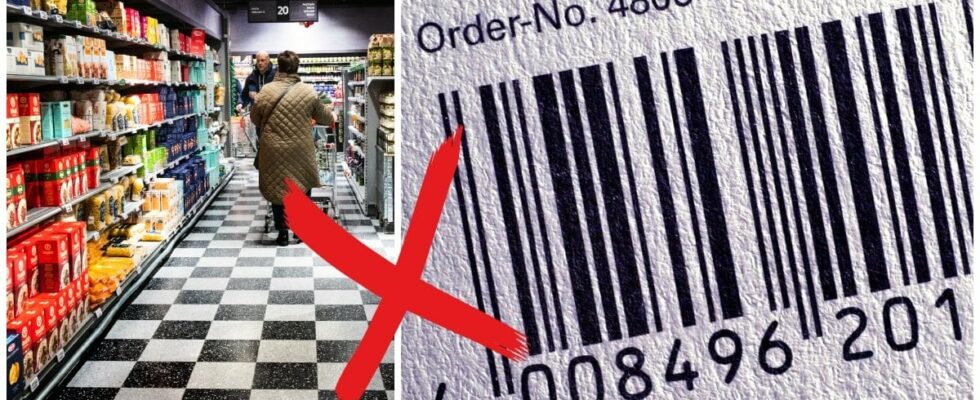It was at Marsh Supermarket in the US state of Ohio, on June 26, 1974, that a bar code was scanned in a store for the first time ever. The barcode in question was on a pack of chewing gum.
But soon the classic barcode, which has existed for five decades on various products, will disappear.
READ MORE: ICA employee reveals: This is the worst thing you can do at the till
A pack of Wrigley’s chewing gum was the first product with a barcode to be scanned in-store. Photo: Yvonne Åsell/SvD/TT
DO NOT MISS: Never do this at the checkout counter at a gas station
The classic barcode must be replaced with a QR code
In connection with the bar code turning 50 years old on Wednesday, 22 global companies, including Carrefour and Procter & Gamle, made a joint statement in which they announced their ambition to replace the classic bar code with QR codes that have so-called GS1 standards .
The goal is for these new QR codes to be scannable in stores by the end of 2027.
– The first barcode scanning revolutionized the way we buy, sell and ship products. Now we are facing a similar transformation where the industry is once again coming together to change the way we exchange product information in the value chain of the future, says Jonathan TullbergCEO of GS1 Sweden, i a press release.
Photo: Tomas Oneborg/SvD/TT
READ MORE: Favorites and fiascos – the Swedes’ rating of the food giants
New QR codes can carry more information
New QR codes can give access to more detailed information and should, according to GS1 Sweden, be able to facilitate and improve traceability, for example, if you want to verify the authenticity of a product, as well as security, where you can more easily prevent the sale of expired or recalled products goods.
In Sweden, the introduction of the newer QR codes has already begun, the company states.
DO NOT MISS: The Posten employee reveals: Customers are the angriest about it
